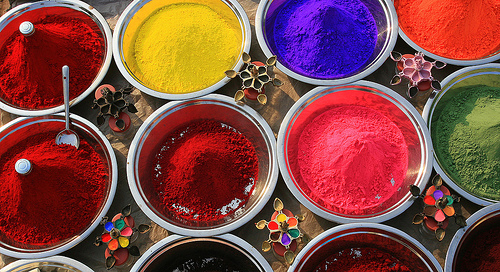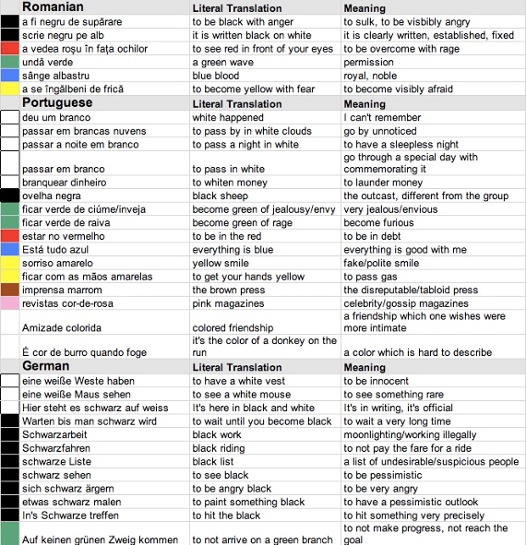Ask an American to name off some colors and you’re likely to hear “Red, Orange, Yellow, Green, Blue, Purple.” Perhaps substitute Indigo and Violet for Purple if the person really knows their rainbow, or add in White and Black as a sort of afterthought. Of course, this isn’t the rote response you’d get from everyone– there’s always going to be some human variation– but since color is culturally defined, there are bound to be similarities between people raised in the same culture.
That “Red, Orange, Yellow…” response we mentioned before is the result of a cultural mnemonic device, Roy G. Biv, to help people remember the order of colors in the spectrum. But if it’s a spectrum– meaning that there is a consistent change in gradient throughout– what made our culture single out these points along it as significant? Good question.
 “Holi Colors,” Credit: Carol Mitchell
“Holi Colors,” Credit: Carol Mitchell
Cultures tend to name items that are important to them. It both gives those things or concepts added meaning, and makes referring to them easier. You no longer have to describe the item or idea you want to discuss, you name it. Quick and easy.
Therefore, different cultures have different naming needs. Alan Kennedy has a fascinating article highlighting the linguistic differences in how cultures view color here.
Furthermore, once a color has been named, it takes on an identity of its own with a culture. Think of a white wedding dress, someone who’s green with envy, a red flag, or something happening out of the blue. These phrases mean nothing to someone unaware of their cultural significance, and languages across the globe are rife with them. Here are more, compiled in a study by Alan Kennedy.
 To check out a spreadsheet with Kennedy’s complete list, go here.
To check out a spreadsheet with Kennedy’s complete list, go here.
